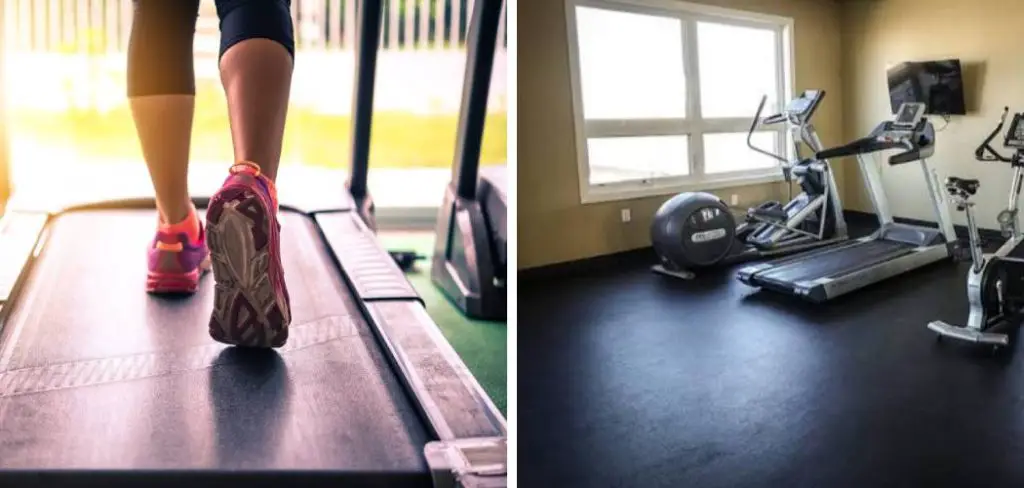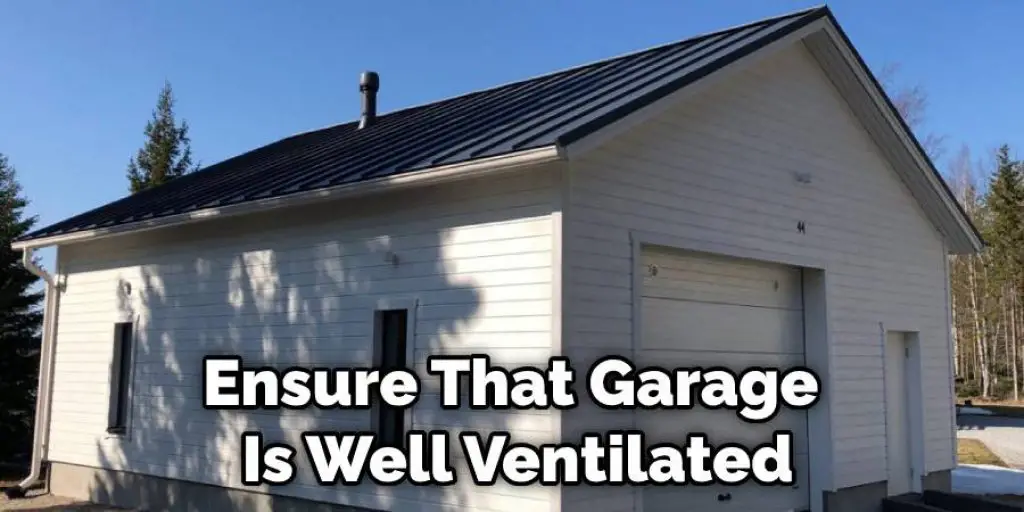Many people like to exercise in the comfort of their own homes. A treadmill is an excellent piece of equipment for this purpose, but it can be expensive. If you are not careful, your treadmill could easily be damaged if stored in the garage. In this article, we’ll discuss how can i protect my treadmill in the garage. Follow these tips to protect your treadmill and ensure it lasts for many years to come.

A garage is a great place to store a treadmill, as it is out of the way and usually has plenty of room. Many people, however, do not realize that the garage can be a very hostile environment for a treadmill. The combination of high temperatures, humidity, and dust can quickly damage a treadmill. However, you should do a few things to protect your treadmill while it is in the garage.
Summary: Storing a treadmill in a garage can be challenging, as exposure to elements like moisture, dust, and temperature changes can cause damage. To protect your treadmill, it’s important to clean it properly, cover it, and place it in a dry, cool space with good ventilation. In this way, you can help extend your treadmill’s life and ensure it’s in good working condition the next time you’re ready to use it.
Problems With Storing Your Treadmill in the Garage
The garage is often seen as a great place to store your treadmill. It’s out of the way, protected from the sun and the rain. However, there are some problems with storing your treadmill in the garage.
Unsuitable Temperatures
The garage can be too hot in the summer and too cold in the winter. These extreme temperatures can damage your treadmill and shorten its lifespan.
Attracts Pests
Another problem with storing your treadmill in the garage is attracting pests. Mice, rats, and insects are all attracted to the garage’s warm, dark, and quiet environment. These pests can damage your treadmill by chewing on wires or nesting inside the motor.
Dust and Dirt
The garage is a dusty environment, and that dust can get into the moving parts of your treadmill and cause problems. It’s also possible for small animals to get into the garage and damage your treadmill.
Lack of Ventilation
The garage is often not well ventilated, which can lead to problems with mold and mildew. If you live in a humid climate, it’s essential to ensure that your garage is well ventilated.

A Detailed Guide on How Can I Protect My Treadmill in the Garage
Protecting your treadmill in the garage is essential to ensure its longevity and performance. The garage environment can present challenges such as temperature fluctuations, humidity, dust, and potential damage from other items stored in the area. In this guide, we will walk you through the steps to effectively protect your treadmill in the garage.
Step 1: Select an Appropriate Location
Choose a suitable location in your garage for your treadmill. Consider the following factors:
- Space: Ensure you have enough space for the treadmill, allowing for proper access and movement around the equipment.
- Ventilation: Select an area with adequate ventilation to prevent heat buildup. Good air circulation helps maintain a consistent temperature and reduce moisture accumulation.
- Flooring: Opt for a level, stable, and non-slippery floor surface. Concrete, rubber mats, or interlocking floor tiles are commonly used in garages.
- Accessibility: Place the treadmill away from potential hazards or obstacles, such as vehicles, tools, or storage items.
Step 2: Clean and Prepare the Area
Before placing the treadmill in the designated area, clean and prepare the space. Follow these steps:
- Remove any debris, dust, or dirt from the floor. Sweep or vacuum the area to create a clean surface for your treadmill.
- Consider placing a mat or carpet under the treadmill to provide an extra layer of protection against dust and potential floor damage.
- Ensure the area is well-lit, either by utilizing existing garage lighting or adding additional lighting fixtures if necessary.
Step 3: Protect from Dust and Dirt
Dust and dirt can accumulate on your treadmill, affecting its performance and longevity. Take these measures to protect it:
- Use a treadmill cover or dustproof sheet to keep the equipment covered when not in use. This will shield it from dust, dirt, and debris that may accumulate in the garage.
- Regularly clean the treadmill’s surfaces, including the console, handrails, and belt, to remove any dust or dirt buildup. Use a soft cloth and mild detergent or a manufacturer-recommended cleaning solution.
- Consider using a treadmill mat or floor protector under the equipment to further shield it from dust and debris. These mats also help reduce vibrations and noise.
Step 4: Control Temperature and Humidity
Fluctuations in temperature and high humidity levels can adversely affect the performance and lifespan of your treadmill. Follow these steps to control the environment:
- Avoid placing the treadmill in direct sunlight or near heat sources, such as heaters or water heaters, to prevent exposure to extreme temperatures.
- Ensure the garage is properly insulated to minimize temperature fluctuations. Insulation can help maintain a more stable environment for your treadmill.
- Use a dehumidifier in the garage to control moisture levels. Excessive humidity can cause damage to the treadmill’s electronic components and promote mold growth.
- If the garage lacks proper insulation or climate control, consider using a portable air conditioner or fan to regulate the temperature and improve air circulation around the treadmill.
Step 5: Prevent Pest Infestation
Garages are often vulnerable to pests, which can cause damage to your treadmill. To prevent pest infestation, follow these guidelines:
- Seal any cracks or openings in the garage walls, windows, or doors to prevent pests from entering. Use caulk, weatherstripping, or door sweeps to close gaps.
- Keep the garage clean and free of food debris that may attract pests. Regularly dispose of trash and use sealed containers for storage.
- Consider using pest repellents or traps strategically placed in the garage to deter pests from approaching the treadmill.
Step 6: Regular Maintenance
Regular maintenance is crucial for the optimal functioning of your treadmill. Follow these maintenance steps:
- Consult the treadmill’s user manual for specific maintenance instructions provided by the manufacturer. Follow the recommended maintenance schedule to ensure proper care of your treadmill.
- Lubricate the treadmill belt regularly to minimize friction and wear. Use a silicone-based lubricant as specified in the user manual. Follow the instructions to apply the lubricant properly.
- Inspect and tighten all bolts, screws, and fasteners periodically to ensure the treadmill remains stable and secure during use.
- Clean the treadmill’s belt and deck regularly to remove dirt, sweat, and debris. Use a soft cloth or brush and a mild detergent or manufacturer-recommended cleaning solution. Avoid using harsh chemicals that may damage the equipment.
- Check the treadmill’s electronic components, such as the console and control panel, for any signs of damage or malfunction. If you notice any issues, consult the user manual or contact the manufacturer for troubleshooting or repair assistance.
Step 7: Consider Climate-Controlled Storage
If your garage experiences extreme temperature variations or high humidity levels despite your best efforts, you may consider alternative storage options for your treadmill. Climate-controlled storage units or indoor spaces within your home can provide a more controlled environment, protecting your treadmill from harsh conditions.
Step 8: Secure the Garage
To safeguard your treadmill and other belongings in the garage, it’s important to ensure proper security measures are in place:
- Install a reliable garage door lock or security system to prevent unauthorized access.
- Keep the garage doors closed and locked when not in use.
- If possible, install motion-sensor lights outside the garage to deter potential intruders.
- Avoid leaving valuable items in plain sight within the garage, as this may attract unwanted attention.
Step 9: Use the Treadmill Regularly
Regular use of your treadmill can actually help maintain its condition. Regular exercise keeps the belt moving, prevents components from seizing, and reduces the risk of moisture buildup. Aim to use the treadmill at least a few times a week to ensure it remains in good working order.
By following these steps, you can effectively protect your treadmill in the garage and extend its lifespan. Remember to consult the manufacturer’s guidelines and recommendations specific to your treadmill model for the best care practices. Regular maintenance, cleaning, and environmental control will help ensure optimal performance and enjoyment of your treadmill for years to come.
Precautions
- Garage is a place where you can store your car or other belongings. But, if you have a treadmill in the garage, it can be dangerous.
- Many people don’t think about the weather and how it can affect their treadmill. If there’s a storm and water gets into the garage, it could damage your treadmill.
- You should also think about other items in the garage that could potentially damage your treadmill. For example, if you have a bike or lawnmower in the garage, they could scratch or dent your treadmill.
- One way to protect your treadmill is to put it on a plastic cover. This will help keep out moisture and other elements potentially damaging your machine.

Conclusion
So, there you have, how can i protect my treadmill in the garage? First and foremost, make sure to purchase a quality treadmill cover. If you don’t want to spend the money on a cover, try to find a space in your garage where the treadmill will be less exposed to the elements. Finally, if all else fails and your treadmill is damaged, know that there are companies out there that offer repair services. Protecting your investment is critical, so take these precautions, and you should be good to go!
You May Also Read: How to Store a Motorcycle in a Garage

